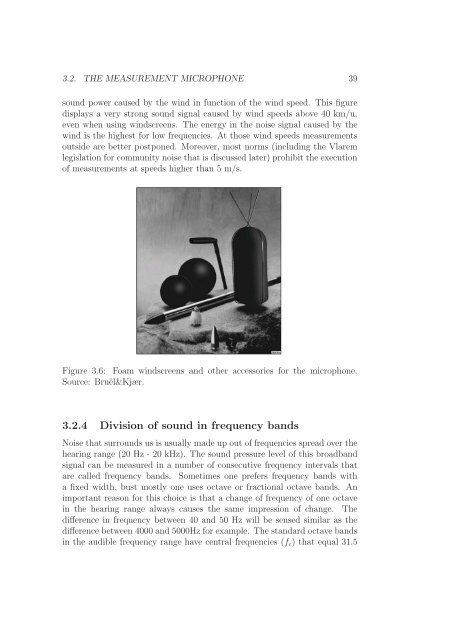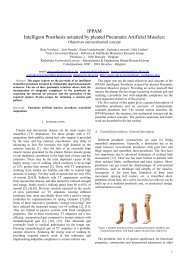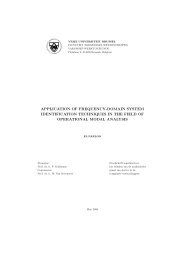VRIJE UNIVERSITEIT BRUSSEL Acoustics - the Dept. of ...
VRIJE UNIVERSITEIT BRUSSEL Acoustics - the Dept. of ...
VRIJE UNIVERSITEIT BRUSSEL Acoustics - the Dept. of ...
Create successful ePaper yourself
Turn your PDF publications into a flip-book with our unique Google optimized e-Paper software.
3.2. THE MEASUREMENT MICROPHONE 39sound power caused by <strong>the</strong> wind in function <strong>of</strong> <strong>the</strong> wind speed. This figuredisplays a very strong sound signal caused by wind speeds above 40 km/u,even when using windscreens. The energy in <strong>the</strong> noise signal caused by <strong>the</strong>wind is <strong>the</strong> highest for low frequencies. At those wind speeds measurementsoutside are better postponed. Moreover, most norms (including <strong>the</strong> Vlaremlegislation for community noise that is discussed later) prohibit <strong>the</strong> execution<strong>of</strong> measurements at speeds higher than 5 m/s.Figure 3.6: Foam windscreens and o<strong>the</strong>r accessories for <strong>the</strong> microphone.Source: Bruël&Kjær.3.2.4 Division <strong>of</strong> sound in frequency bandsNoise that surrounds us is usually made up out <strong>of</strong> frequencies spread over <strong>the</strong>hearing range (20 Hz - 20 kHz). The sound pressure level <strong>of</strong> this broadbandsignal can be measured in a number <strong>of</strong> consecutive frequency intervals thatare called frequency bands. Sometimes one prefers frequency bands witha fixed width, bust mostly one uses octave or fractional octave bands. Animportant reason for this choice is that a change <strong>of</strong> frequency <strong>of</strong> one octavein <strong>the</strong> hearing range always causes <strong>the</strong> same impression <strong>of</strong> change. Thedifference in frequency between 40 and 50 Hz will be sensed similar as <strong>the</strong>difference between 4000and 5000Hzfor example. The standard octave bandsin <strong>the</strong> audible frequency range have central frequencies (f c ) that equal 31.5
















